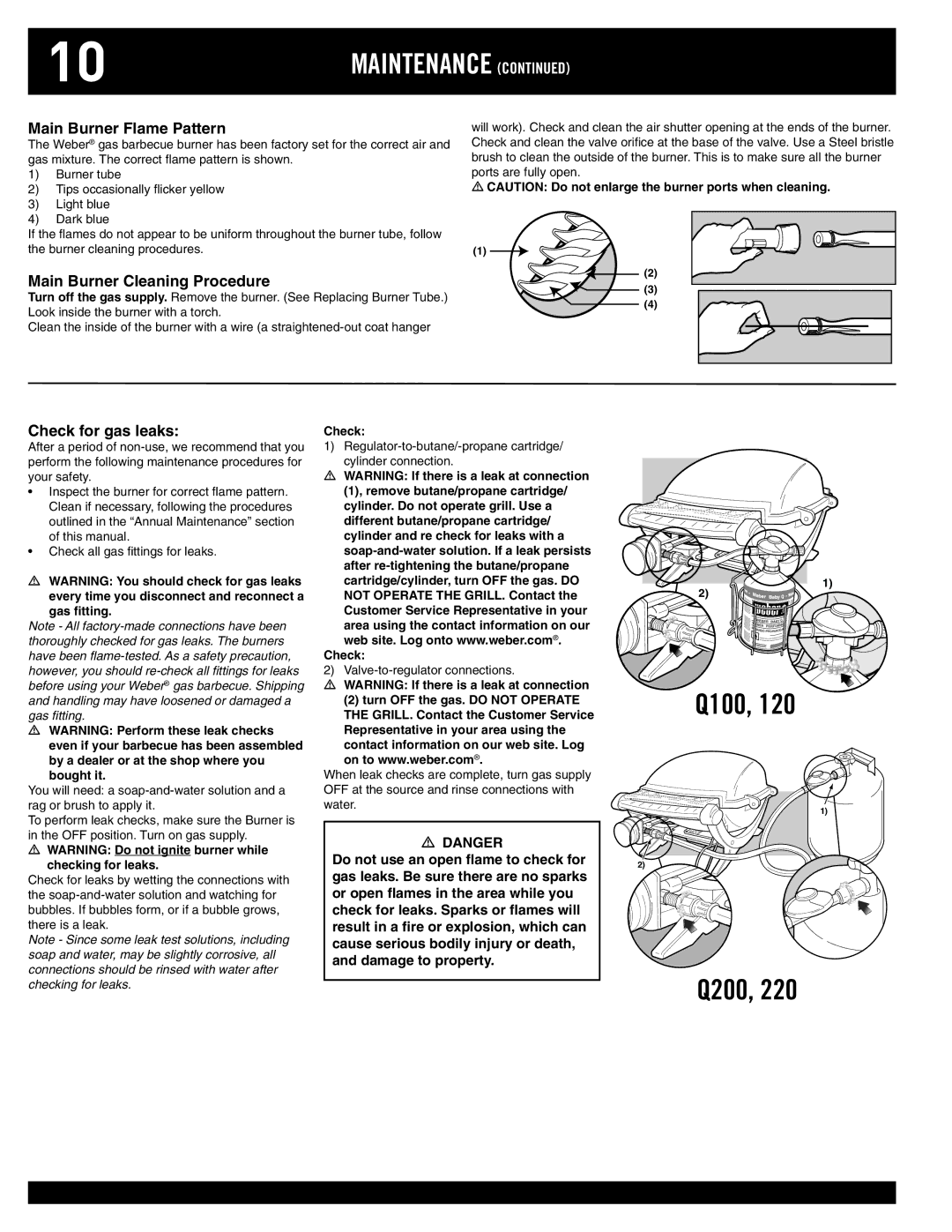220, 200, 120, 100 specifications
The Weber 100 is a remarkable outdoor cooking device that has gained popularity among grill enthusiasts and barbecue lovers. This versatile gas grill combines innovative design with modern technology, providing exceptional performance for both novice and experienced chefs alike.One of the standout features of the Weber 100 is its compact size, making it ideal for small patios, balconies, or even camping adventures. Despite its smaller footprint, the grill does not compromise on cooking space. The main cooking area is spacious enough to accommodate multiple burgers, steaks, or vegetables, making it suitable for gatherings and family meals.
The grill is equipped with advanced burner technology, including a powerful stainless steel main burner that ensures even heat distribution for consistently cooked food. This feature is complemented by integrated Flavorizer bars, which vaporize drippings and add a unique smoky flavor to the grilled items, enhancing the overall taste.
In terms of control, the Weber 100 stands out with its easy-to-use ignition system, allowing for quick starts with just a push of a button. Users can precisely manage temperatures using adjustable burners, enabling the perfect sear for meats or slow-cooking for tender results.
Construction quality is another highlight of the Weber 100. Made from durable materials, it is designed to withstand the elements while maintaining its sleek aesthetic. This construction not only contributes to the longevity of the grill but also simplifies cleaning and maintenance, ensuring that it looks great for years to come.
For those who appreciate convenience, the Weber 100 comes with useful features such as built-in side tables for meal prep and a storage area for utensils and condiments. The grill’s compatibility with various Weber accessories enhances its versatility, allowing users to experiment with different cooking methods such as smoking or baking.
In conclusion, the Weber 100 is an excellent addition to any outdoor cooking setup. Its compact yet spacious design, efficient burner technology, user-friendly controls, and sturdy construction make it a standout choice for anyone looking to elevate their grilling experience. Whether hosting a summer barbeque or enjoying a quiet dinner, the Weber 100 delivers delicious results with ease and style.

